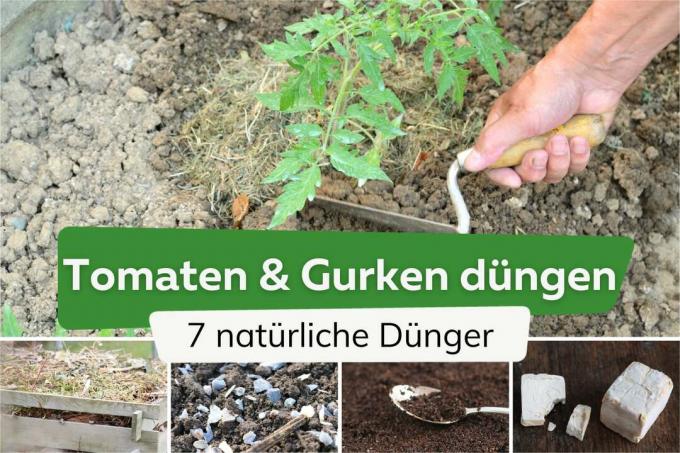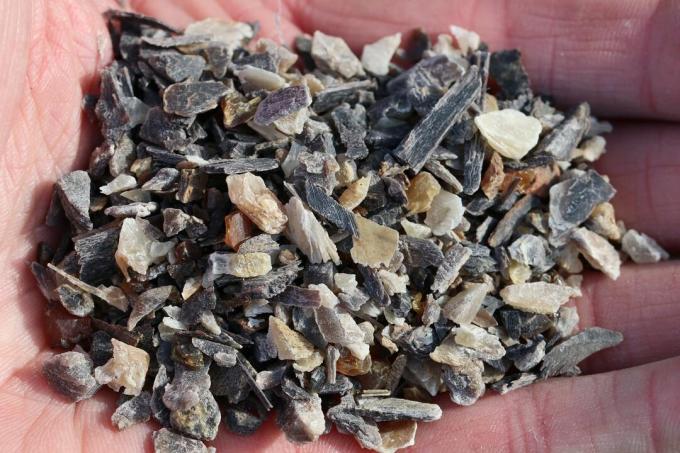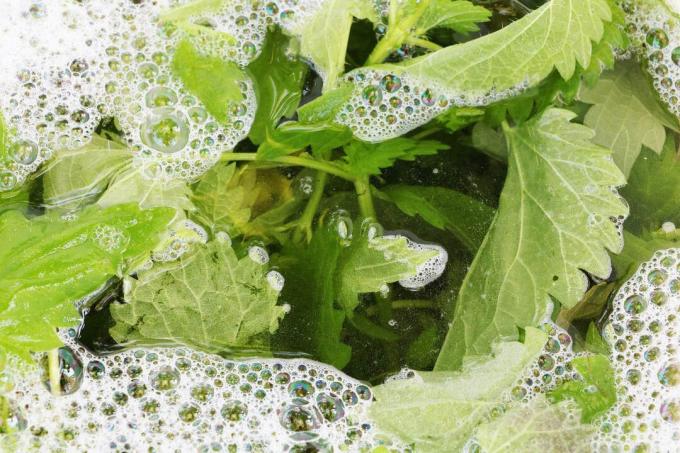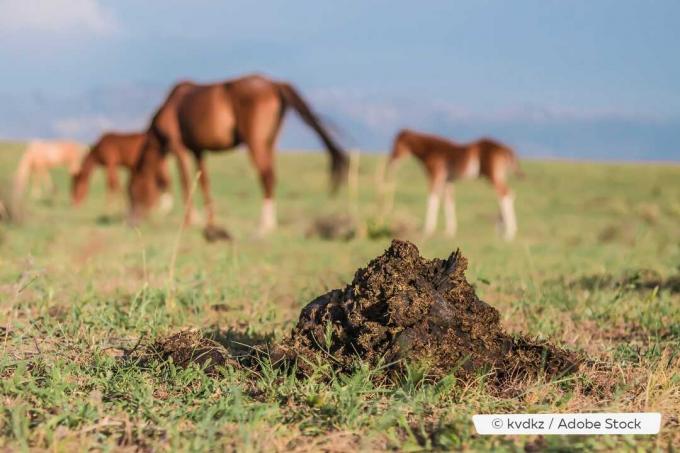
Organic gardening is very trendy and can be used particularly well for growing vegetables. An important factor here is the use of only organic fertilizers. We present natural fertilizers for tomatoes and cucumbers.
In a nutshell
- Natural fertilizers are usually the best choice for tomatoes and cucumbers
- contain all important nutrients
- Allow the material to mature well
- Over-fertilization hardly possible
Table of contents
- compost
- horn shavings/horn meal
- plant manure
- horse manure
- chicken manure
- coffee grounds
- yeast and sugar
- frequently asked Questions
compost
compost is the classic natural fertilizer for tomatoes and cucumbers. It contains nitrogen, phosphate, potassium and lime as well as all trace elements. This complete fertilizer supplies the soil with humus and nutrients, maintains the soil structure and fertility and promotes soil life. Things to keep in mind when fertilizing:

- only use mature compost
- mature for about nine months
- immature too nutritious and salty
- mature crumbly structure, smell of forest earth
- first fertilization when planting out
- two liters per square meter and week until flowering
- After flowering, work in three to five liters of compost
- Top up the bed with compost in the fall for the next season
Tip: Depending on the starting material, the proportions of the individual nutrients can vary. In some cases, it may be advisable to incorporate additional horn shavings when planting.
horn shavings/horn meal
horn shavings or horn meal are particularly rich in nitrogen. It is released over a longer period of time, which makes this fertilizer a very good long-term fertilizer for tomatoes and cucumbers. The application is uncomplicated:
- fertilize on an overcast day
- pay attention to even soil moisture
- Nitrogen release so optimal
- fertilize for the first time in spring
- before sowing or planting
- Scatter around the plant and work in
- approx. 100 g per square meter or per 100 liters of substrate
- one fertilization supplies plants for about three months

Cucumbers and tomatoes are among those heavy feeders For whom a balanced supply of nutrients is essential, especially during the growth phase and fruit formation. Ideally, horn shavings are combined with fresh compost. How much of which fertilizer is needed depends on the condition of the soil.
Tip: Horn shavings are not suitable for specimens in the bucket, because microorganisms or Soil organisms, which are needed for decomposition, are only present here in very small quantities.
plant manure
Very good results can also be achieved when fertilizing tomatoes and cucumbers with plant manure nettles, comfrey or field horsetail. In addition to many other nutrients, they mainly contain potassium and nitrogen. A corresponding liquid manure is easy to produce:
- from about a kilo of fresh chopped cabbage
- place in a suitable container
- add 10 liters of water
- cover the whole thing, put in a shady, warm place
- Leave to ferment for two to three weeks, stirring daily
- add some rock powder to counteract the intense smell
- Done when there are no more bubbles
administer liquid manure

Once you have made the natural fertilizer for tomatoes and cucumbers from the desired ingredients, the application is very simple:
- filter fermented plant remains through a sieve
- Dispose of plant material in the compost
- Dilute liquid manure 1:10 with water
- one part manure and 10 parts water
- pour into watering can
- Fertilize cucumbers and tomatoes
- until flowering once every two weeks
- with fruiting once a week
Tip: Metal containers should not be used to produce plant manure, as substances that are harmful to the plants could be released from the metal during fermentation.
horse manure
horse manure has a similar effect as compost. It also supplies heavy consumers such as tomatoes and cucumbers with nitrogen, phosphate, potassium and magnesium.

- leave for at least a year
- only fertilize with it every three years
- spread dried manure on the floor
- about a kilogram per square meter
- then cover with soil
Horse manure releases its nutrients over a three-year period, most of it at 60 percent in the first year. In the second year it is approx. 25 percent and in the third still 15 percent.
A notice: Fresh horse manure is unsuitable as a natural fertilizer for cucumbers and tomatoes, as it can reach temperatures of up to 80 degrees and burn the plants.
chicken manure
The manure of free-ranging chickens contains a lot of phosphorus. It should also be well seasoned, because when it is fresh chicken manure it looks like there is a risk of pathogens spreading. Most of these only degrade after prolonged storage.

Tip: If you want to be on the safe side with regard to pathogens, you can use appropriate fertilizer pellets as an alternative.
- Chicken manure takes effect particularly quickly
- ideally compost with other organic materials
- like foliage, grass clippings and straw
- give only every three years
- three kilograms per square meter
- Efficacy in the first year at 75 percent
- 15 percent in the second year and 10 percent in the third
If you want to fertilize with manure, regardless of whether horse, chicken or cow manure, you should do it every two to carry out a soil analysis every three years to avoid over-fertilisation, particularly with phosphate to prevent
coffee grounds
coffee grounds is an excellent natural fertilizer for tomatoes and cucumbers. It also contains potassium, nitrogen and phosphorus. The biggest problem here is getting a large enough crowd. Basically, the grounds should be dried before using them for fertilization, damp grounds mold very quickly. But what else should you pay attention to?
- administer once a month
- in dry form or over the irrigation water
- Distribute the dry set around the plant, work into the surface
- Fertilize young plants no earlier than four weeks after planting out
- thereafter every four weeks
- about 50 g per plant
- water after fertilizing

If you want to administer coffee grounds over the irrigation water, you should let them soak in the irrigation water for 6 to 12 hours beforehand. To avoid acidification of the soil due to too much coffee grounds, you can use crushed ones eggshells Mix.
Tip: Coffee grounds should not simply be dumped next to the plants, the resulting Layer of coffee grounds would gradually clump together, thus reducing the supply of oxygen and water make more difficult.
yeast and sugar
Yeast makes a very good indirect natural fertilizer for tomatoes and cucumbers and also protects against diseases. You can make it with or without sugar. However, sugar enhances yeast fermentation in fertilizer and serves as a food source for yeast and other soil organisms. A simple yeast-sugar fertilizer is quick to make:

- Crumble 100 g yeast in a bucket
- add a cup of sugar, leave for an hour or two
- then pour over 10 liters of warm water
- Mix well and leave to ferment for a week
- Dilute 1:10 with water before use
- about half a liter of liquid under each plant
Tip: Since yeast can only work when it is warm, this fertilizer should only be used during warm temperatures in spring and late summer.
frequently asked Questions
Natural fertilizers often need warmth to be effective, in spring it is usually still too cold. Better to wait until after the ice saints.
Yellow leaves can indicate a nitrogen or magnesium deficiency, dark to reddish leaf discolouration and low growth to a lack of phosphorus and a lack of potassium is evidenced by wilted leaves and drives.
Mulching is by no means enough to supply cucumbers or tomatoes with sufficient nutrients, especially since they have a high nutrient requirement.
